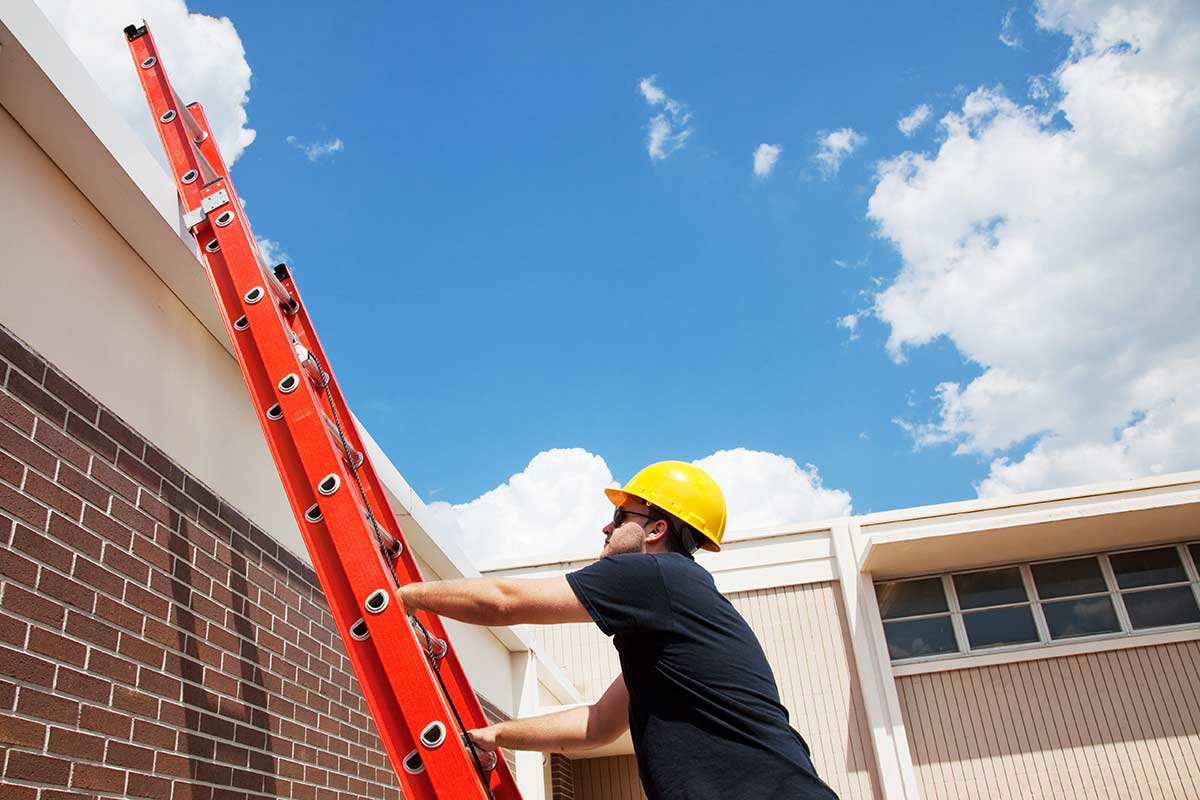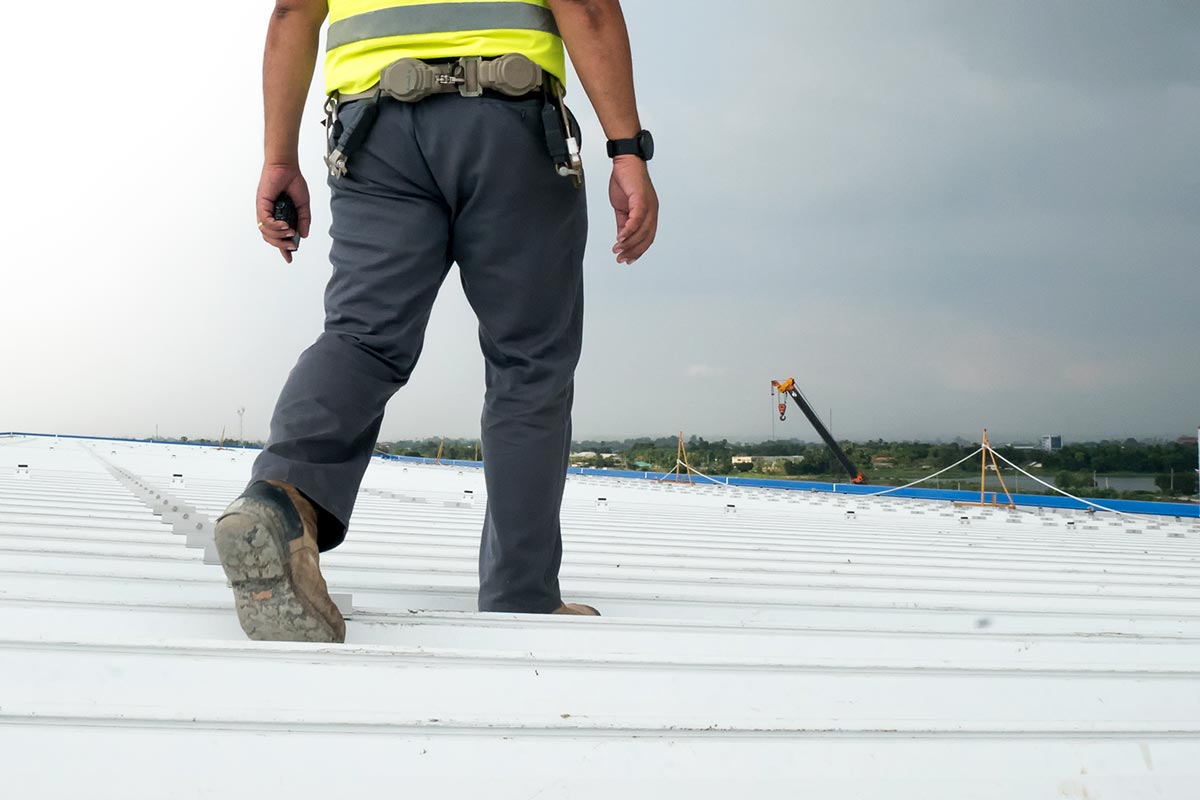
If you’re considering getting a new roof or roof restoration system installed, or are in the process of acquiring one, then it’s important to understand the intricacies of the included warranty. American WeatherStar hopes to provide some clarity in this regard on a wide range of common warranties present in the roofing industry.
The first point in this clarification is that the length of the warranty is not the most important aspect of the warranty document. The most important aspect is what the warranty includes as well as what it excludes. As such, it is important to carefully read any warranty you are considering. Many warranties issued in the roofing industry are called “material warranties,” which only cover the premature breakdown of the roofing materials but do not cover leaks in the roof system. This is not meant to critique these types of warranties, rather, they are the best option for the proprietor as these warranties are often paired with a “workmanship warranty” and can be a more cost-effective option, as the “workmanship warranties” cover the labor of the roofing system.
An NDL System Warranty from American WeatherStar covers both the labor and material components of the new roofing system in the event of a leak due to material or workmanship failure. As previously mentioned, it is important to note what this warranty excludes, as well:
NDL System Warranty Exclusions
- Flood, fires, earthquakes, tornadoes, hail, lightning, hurricanes or other acts of God.
- Installation, erection or construction of any additional equipment and/or structure on or through roofing substrate or flashing after date of application of the System.
- Failure of, or repairs to, substrate and/or defects in any component underlying the roofing substrate, flashing, or caused by faulty construction and/or design.
- Application of, or repairs to, substrate and/or flashing after the date of the original application of the System.
- Environmental fallout or overexposure to commercial/ industrial solvents, acids, caustic fluids, or other harmful chemicals
- Acts of negligence, abuse, accidents, vandalism, falling objects, civil disobedience, war or any other acts beyond the control of American WeatherStar.
- Insects or animals.
- Movement or deterioration of material adjacent to or through the American WeatherStar System.
- Condensation. Condensation is caused from lack of ventilation and/or insulation.
- Owner’s or the building occupant’s failure to use reasonable care in maintaining the roof and building.
The exclusions listed within the American WeatherStar StarGard Warranty are considered industry-standard. A roofing manufacturer or supplier of fluid-applied coatings can only ensure the system is installed properly and that the material will not degrade prematurely. In the event of either failure, the leak is covered by the warranty—but as there are numerous other ways for leaks to occur in a roof, they cannot possibly all be included in a warranty’s list of exclusions.
Both material warranties and system warranties from American WeatherStar must be installed by an Approved Contractor. The contractor quoting the project should have proper credentials including insurance, state license (if applicable), and approval from the material supplier.
Warranties are not automatically included with all roofing system installations. A warranty application must be filled out and approved by the supplier. When the project is complete it is essential to have a maintenance plan in place for the new roofing system. A 12, 15, or even 20-year warranty will not benefit the roof if the term is voided within the first few years due to neglect. The roof needs to be maintained and checked once or twice a year.
American WeatherStar requires a documented annual maintenance program for all system warranties. For 10, 12, and 15-year warranties, the building owner can perform their own maintenance. The 20-year system warranty requires an American WeatherStar Approved Contractor to perform the maintenance.
Establishing a Roof Maintenance Program
When formulating a leak-preventing maintenance program with your roofing contractor, be sure to include the following inspection points:
- The entire roof should be walked in order to find storm damage and remove all debris.
- Roof drains, scuppers, and gutters should be inspected and cleaned to ensure proper drainage is maintained.
- All expansion joints, parapet walls, counter flashing, and seams should be checked for any cracks or breaches and repaired if neseccary.
- All HVAC stands and structures should be inspected for cracks in flashings or between any crickets.
- All pipe penetrations should be checked for any damage.
- All coping and metal edge areas should be inspected.
- The field and perimeter of any fiberglass skylights should be inspected.
- The roof should be cleaned with light pressure-washing on an annual basis to ensure cleanliness and reflectivity. Use caution not to damage the system.
Most companies will include a report in their annual or bi-annual inspection to be kept for your records. Any issues that arise should be repaired with an approved product.
Conclusion
Hopefully, with the clarity provided here, building owners will be able to take full advantage of their roofing system warranty and not fall prey to missteps that lead to a voided warranty.
Related Posts
How to Establish a Roof Maintenance Program
The most important reason for establishing a roof maintenance program is to protect the capital investment of a new roof. Proper maintenance…
5 Commercial Roof Maintenance Best Practices
Having a solid plan for commercial roof maintenance and repairs is critical to keeping your roof strong and preventing premature roof failure.…
Independent Warranty Inspections
In this edition of Tech Talk, Brian talks with Rick Napper of PFRI Services about the process of taking core samples during a warranty…



